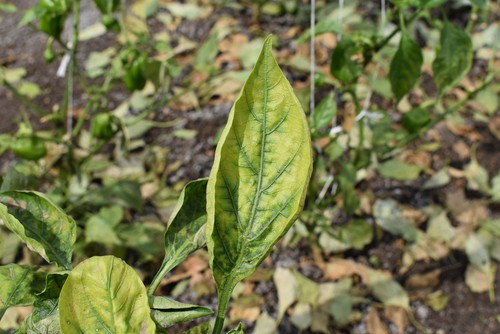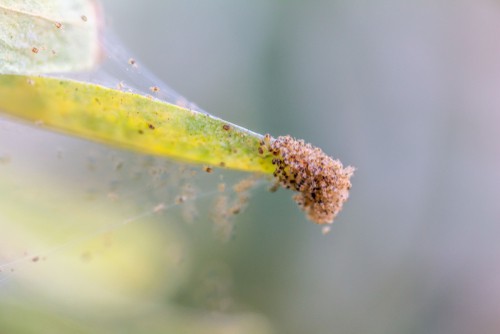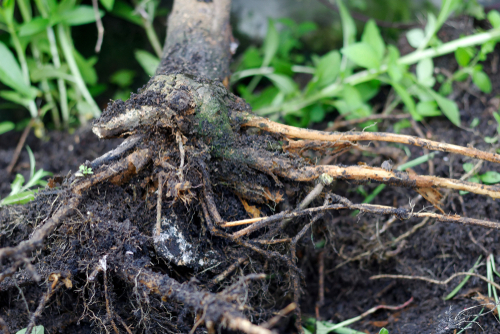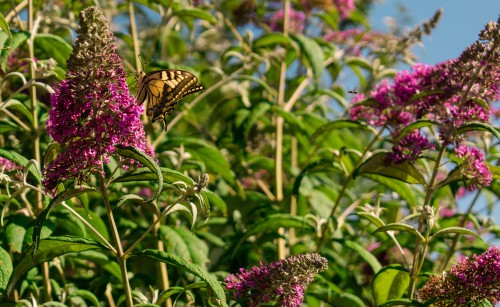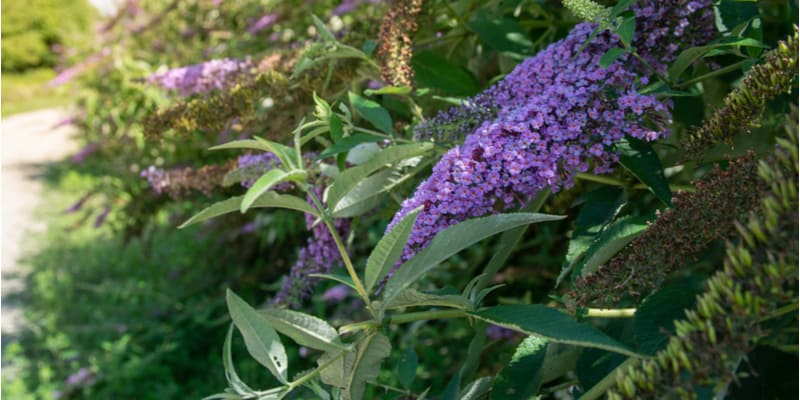
Why Are My Butterfly Bush Leaves Turning Yellow and Falling Off?
Our site is reader supported, this means we may earn a small commission from Amazon and other affiliates when you buy through links on our site.
Butterfly bushes are a favourite for gardeners seeking to attract pollinators such as bees and butterflies and you don’t get much better than planting a butterfly bush or two. Healthy buddleia bushes display vibrant blooms and dense foliage, which can look amazing when cared for correctly.
Something they can suffer from though is the leaves turning yellow and falling off so in this guide I’m going to tell you why this might be happening. Read on further for common issues that affect buddleia leaves.
Nutritional issues including iron
Everyone knows that plants require soil with nutrients and water to thrive. However, buddleia is also known for being able to grow anywhere from wastelands to cracks in tall buildings. This gives them the false impression that because of this, they don’t need many nutrients.
However, this is simply not true and because of this one of the most common reasons for yellowing leaves is a deficiency known as iron chlorosis. This a basically a lack of iron in the soil which causes the leaves to turn yellow. You will know if this is the true cause as they usually have yellow leaves with green veins.
If this is what is causing your leaves to turn yellow then I recommend adding some lime to the soil at a rate recommended on the packaging and giving them a general fertiliser feed every couple of weeks.
However, other nutrient deficiencies such as potassium, nitrogen, and phosphorus can also cause discoloured leaves leading to defoliation.
By using well-rotted manure and general fertilisers, you can give the plants the nutrients they need. To find out if the soil is the problem, you can buy soil test kits.
Diseases and large population of pests
Pests
Pests are not usually a big problem with buddleia as they usually recover quickly. However, heavy infestations of pests such as aphids and spider mites drain plant sap, leaving discoloured yellowing leaves that eventually fall.
You usually notice the webs created by spider mites before you see the actual pests but there can be easily controlled with a pesticide. Aphids will usually attack the newest growth and can smother plants but these can also be controlled with a general pesticide or even soap and water sprayed onto the aphids directly.
Learn more about what might be eating your buddleia leaves here
Diseases
Verticillium wilt and powdery mildew are some of the diseases that cause deformed and yellowing leaves that eventually die off. Verticillium wilt is a soil born fungus that effected the roots, it’s usually fatal and you ideally should not plant in that area again although you can try a plant that is known to be Verticillium wilt resistant.
You can try applying a nitrogenous fertiliser around the base of the plant. I recommend using sulphate of ammonia at 25g per sq meter, or urea at 50g per sq meter once or twice during the remainder of the growing season and working the fertiliser into the soil. It’s not guaranteed to work but some gardeners have had success when trying to help buddleia recover.
Plants affected by powdery mildew can be treated with a fungicide and the worst affected leaves removed. This disease is usually not fatal.
You can learn more about pests and diseases that affect buddleia in my guide here
Accidental drift spray from herbicides
Chemicals and gardens have a love hate relationship depending on how you use them. If you use the chemicals as instructed, it should not be an issue. Problems arise when plants come into direct contact with too many chemicals or accidentally get herbicides on them from wind drift. Herbicides sprayed directly on the leaves seep into the butterfly bushes, causing an accumulation of toxic materials that start killing off the plant. Just take care when spraying in areas near the plants you don’t want to affect and spray on days with no wind.
Thirsty plants
If the buddleia bushes are struggling to get enough water, at first the leaves will wilt but eventually, the leaves will discolour and fall off eventually. Young buddleia needs watering frequently, especially in the morning before the sun becomes too hot. Sometimes even twice a day on very warm days.
You can learn more about why your buddleia might be wilting here
Generally, buddleia does not have deep roots and that is why you should give them enough water, especially during hot days and especially plants grown in pots with limited root systems.
Get some extra tips on growing buddleias in pots here
Nature’s way
Old leaves have to die away to save the plant’s energy to support new leaves. Old leaves turn yellow, dry up and eventually fall. Usually, old leaves drop at the same time; therefore, it should not be concerning if the younger leaves remain healthy. Warning bells should go off if both the young and the older leaves discolour and die.
Transplant shock
Buddleias experience transplant shock that can cause yellowing leaves. The sudden change of environment affects the plant, and it might take a while to recover. As a preventative measure, avoid causing unnecessary damage to the roots while transplanting, especially for younger plants.
Final Conclusion
Most of the issues that cause buddleia leaf discolouring and fall off are solvable, thus, there is hope for your plants. However, if buddleias get infected with issues such as root rot, there are no remedies available that are 100% effective.
Prevent such occurrences by using well-drained soils and avoid overwatering the plants.
